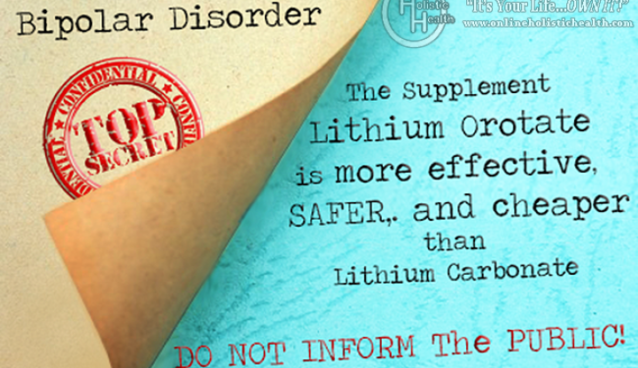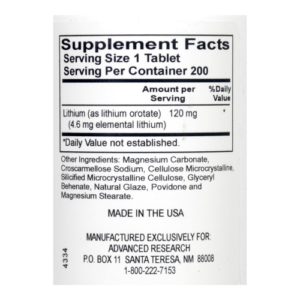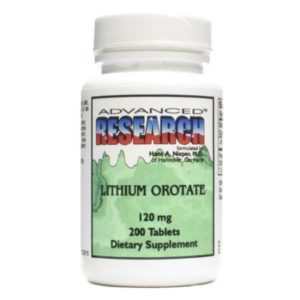Lithium Orotate. Bypass the Side effects.

The real breakthrough of lithium supplementation is discovered through the use of an all natural, organic lithium compound known as Lithium Orotate (LO). (Lithium and Orotic Acid were formulated together by Dr. Hans Nieper, an acknowledged German medical doctor and genius.)
Lithium has been long known for it healing properties regarding mental conditions such as bi-polar and manic disorders. In the 1940’s lithium chloride was used as a substitute for table salt, but after some reported deaths due to toxic effects, it was promptly prohibited. This has lead many to “logically” believe that lithium chloride is toxic, but this is not necessarily true. People aware of the effect of lithium on mood, actually used the salt in excess; of course, at the time it was unknown that the salt was, in fact, toxic in large amounts. Lithium chloride seems to have been toxic due to the poor bioavailability of the carrier salt that the lithium was attached to; in this case chloride.
Lithium chloride, just as with sodium chloride (table salt), is a necessary element we need for health. However, as we all are well aware, table salt when used in excess can have extremely harmful effects on our health. So the balance is what we need to find.
Just as with lithium chloride, lithium carbonate can become toxic for the same reason – poor bioavailability. Trying to achieve the amount of lithium needed for the desired health effects without damaging the body in the process is a major concern, and is why those who take this version of lithium must have their kidney function tested often.
This is where lithium orotate come in.
Safe, yet Ignored, Lithium Orotate.
Orotates, discovered by Dr. Hans Nieper, were found to be a component of natural electrolyte carriers designed for distributing minerals throughout the body.
Based on Dr. Nieper’s observations of cells, he concluded that molecules of minerals attached to an orotate carrier can pass through cell membranes intact without breaking apart into their component ions. This was a ground breaking discovery, because it was found that the respective ions of the mineral could be released at specific membrane sites within the cell. This is what is known as the bioavailability of the orotate carrier of minerals and it has since been applied to calcium, magnesium, zinc, and lithium.
Briefly: Let’s take a look at typical lithium dosages of both lithium carbonate and lithium orotate that is required to achieve the same health effect:
- 300 mg of Lithium carbonate contains ~ 60 mg of elemental lithium
- 1 – 2 capsules TIB (3 times per day)
- Equals 180 – 360 mg of elemental lithium
- 100 mg of lithium orotate contains ~ 5 mg of elemental lithium
- 1 – 2 tablets TIB Equals 15 – 30 mg of elemental lithium
Dr. Ward Dean, M.D said it best,
“Prescription lithium is poorly absorbed by the cells, where it needs to be to do its job. Because it is so poorly absorbed, blood levels need to be fairly high to “drive it into the cells.” Unfortunately, these “therapeutic” blood levels are dangerously close to the toxic level. That’s why patients on prescription lithium need to be carefully monitored. The level needs to be high enough to push the lithium into the cells, but not too high to pickle the kidneys.
However, with lithium orotate, it is not necessary to reach “therapeutic” blood levels, because it seems to go right into the cells where it belongs, and where it can do its intended job. I think a more effective way to determine whether lithium orotate is working, and whether an adequate dose has been prescribed, is to monitor the patient. Usually, asking them how they feel is enough. The effects are evident to the patient, as well as to the people around him. I think doing a blood test when taking lithium orotate is a waste of blood.”

